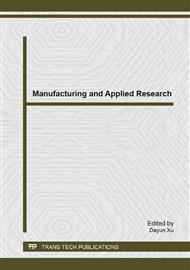p.3
p.8
p.12
p.19
p.24
p.27
p.32
p.36
Comparison Study of Fire Resistance According to Differences of Length of H-Section Made of Submarine Structural Steels
Abstract:
Submarine structural steels, such as SM 400, SM 490, and SM 520, have the same structural properties and same grades as general structural steels, but those have better weldability than general structural steels. For that reason, their usage is increasing. However, their fire resistance is not well defined, except for individual fire resistance, such as column and beam. The fire resistance of H-section made of submarine structural steels can be applied with various column lengths. The fire resistance of them is not clear to engineers and residents. To determine the fire resistance, in this paper an analysis was conducted using their mechanical properties at high temperature and related theories with a standard fire curve. As the strength of submarine structural steels is increased, the structural stability showed a rapid decrease while the longer the length of column, the less structural stability of the column represented.
Info:
Periodical:
Pages:
8-11
Citation:
Online since:
March 2014
Authors:
Price:
Сopyright:
© 2014 Trans Tech Publications Ltd. All Rights Reserved
Share:
Citation:


